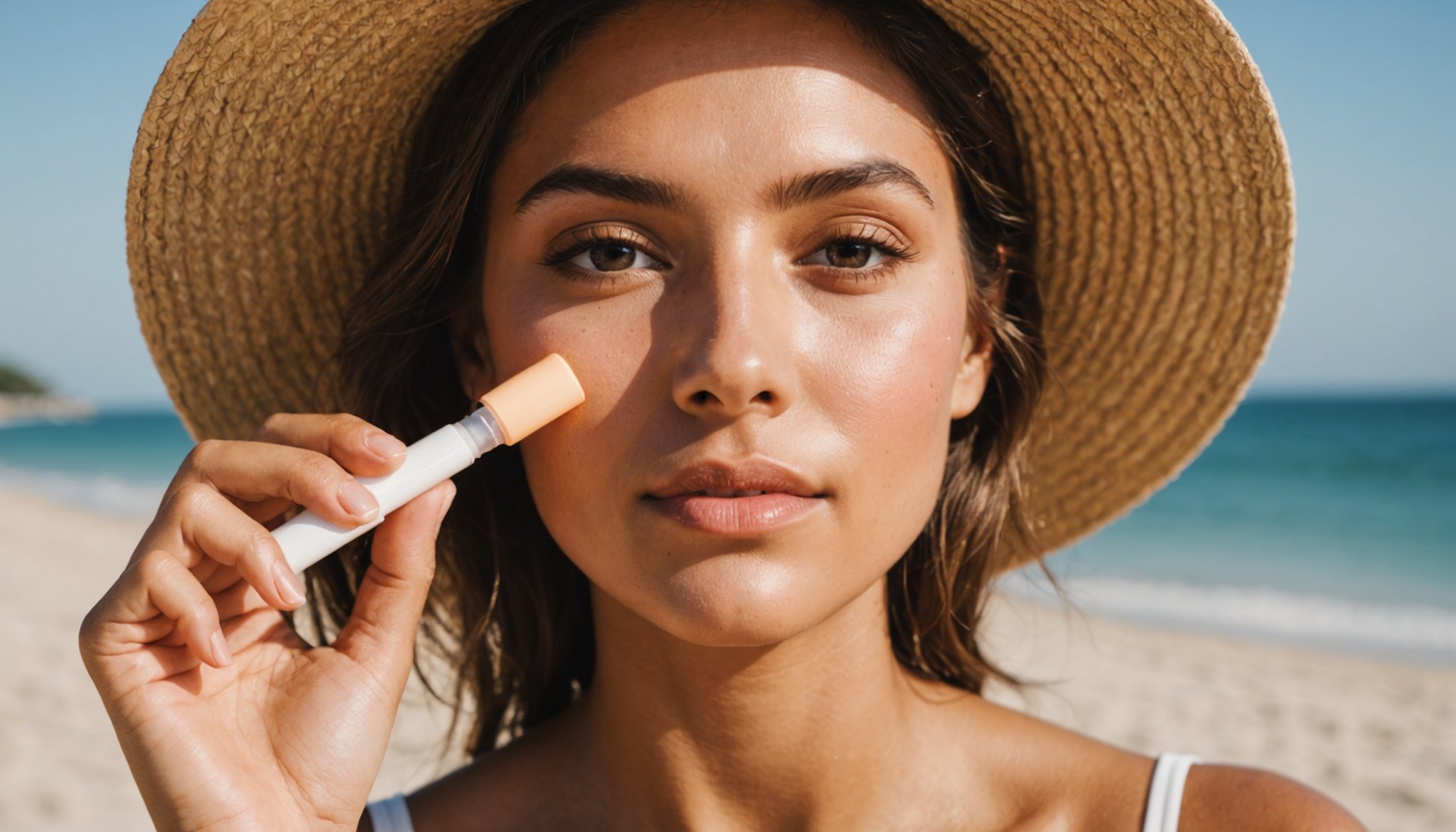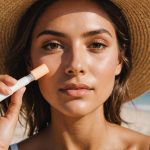Understanding Sunscreen Types
Choosing the right sunscreen is crucial for effective skin protection. Two main types exist: chemical sunscreens and physical sunscreens. Chemical options work by absorbing UV radiation through ingredients like avobenzone and octisalate. They’re often lighter on the skin and easier to apply. On the other hand, physical sunscreens, containing minerals such as zinc oxide and titanium dioxide, sit on the skin’s surface to reflect UV rays. They’re ideal for sensitive skin but may feel heavier.
Both types should provide broad-spectrum protection. This means they shield against both UVA rays, which cause aging and wrinkles, and UVB rays, responsible for sunburns. Without broad-spectrum coverage, sunscreen only offers partial defense against harmful effects.
Topic to read : Discover Powerful Yoga Techniques for Effective Stress Relief
An important factor to consider is the SPF, or Sun Protection Factor, which indicates the level of protection against UVB rays. For instance, an SPF of 30 means you can stay in the sun 30 times longer than without protection before burning. However, it’s essential to note that SPF does not account for UVA protection, reinforcing the need for broad-spectrum products. Always reapply sunscreen every two hours or after swimming or sweating for optimal protection.
Choosing the Right Sunscreen for Makeup
Finding the perfect makeup-friendly sunscreen is crucial for maintaining both skin health and a flawless makeup application. When selecting a sunscreen for use under makeup, focus on lightweight formulas that don’t feel heavy on the skin. This ensures that your makeup layers smoothly, without any sticky or greasy residue that could affect its longevity and appearance.
Also read : Top Strategies to Banish Under-Eye Bags for a Bright, Refreshed Look
A paramount consideration is to opt for non-comedogenic sunscreens. These formulations are designed to not clog pores, making them ideal for those with acne-prone or sensitive skin. By choosing a non-comedogenic option, you can minimise the risk of breakouts and skin irritations while still protecting against harmful UV rays.
Characteristics to look for in makeup-friendly sunscreens include:
- Broad-spectrum protection to shield against both UVA and UVB rays.
- Quick absorption for a smooth makeup application process.
- A matte finish to prevent excess shine, especially for oily skin types.
Brands often provide options specifically tailored for wearing under makeup, featuring lightweight, non-greasy textures. These options not only safeguard your skin but also enhance your makeup’s overall appearance and staying power. Always consider the unique needs of your skin type and preferences when exploring these sunscreen choices to ensure your skincare and makeup routine work harmoniously together.
Preparing Your Skin for Sunscreen Application
To ensure optimum effectiveness when applying sunscreen, a thorough skincare routine is key. Begin with cleansing to remove any impurities and excess oils. This step is crucial as it provides a clean slate for the subsequent products in your routine. Next, apply a suitable moisturizer according to your skin type—lighter gel formulas for oily skin or richer creams if you have dry skin.
Pre-makeup preparation includes gauging the right amount of product for your specific needs. For instance, individuals with sensitive skin might opt for hypoallergenic products to avoid irritation. After hydrating, give your skincare products ample time to absorb completely before proceeding with sunscreen. This waiting period ensures product effectiveness and prevents them from mixing unevenly, which could result in reduced sun protection.
Different skin types require varied approaches to preparation. Oily skin may benefit from a non-comedogenic moisturizer to reduce the risk of clogged pores, whereas those with dry skin might seek intense hydration from ingredients like hyaluronic acid. Understanding your skin’s unique needs and tailoring your routine accordingly enhances protection against environmental factors. By methodically preparing and allowing each product to seep into your skin, you create an ideal base for sunscreen application, ultimately promoting a radiant and shielded complexion.
Techniques for Applying Sunscreen Under Makeup
Applying sunscreen effectively without compromising your makeup can be a tricky task, but with the right application techniques, you can ensure protection and a flawless finish. First, it’s important to apply sunscreen after your skincare routine and before your makeup. This layering of products helps each product perform its intended function without interference.
Begin with a thin layer of sunscreen, applied generously yet evenly across the face. The best techniques involve either dabbing or patting the sunscreen gently. This ensures the product is absorbed without smearing the underlying layers. Avoid rubbing, as this can disturb the skincare or makeup base.
For those wondering how to maintain an even coverage while keeping the makeup base intact, using a sponge or beauty blender to gently press the sunscreen can be highly effective. Allow ample time for the sunscreen to settle and dry properly before moving on to your foundation or any other cosmetic products.
Additionally, consider using makeup products that contain SPF for extra coverage. This doesn’t substitute a dedicated sunscreen, but it adds another layer of protection. By practising these sunscreen application techniques, not only do you keep your skin safe, but your makeup will look impeccable all day long.
Recommended Products for Sunscreen Under Makeup
When shopping for recommended sunscreens that work seamlessly under makeup, it’s vital to consider highly rated options that deliver both protection and comfort. Among the top contenders is EltaMD UV Clear Broad-Spectrum SPF 46. Known for its lightweight, oil-free formula, this sunscreen is ideal for acne-prone or sensitive skin. Users applaud its effectiveness in preventing breakouts while allowing makeup to glide on smoothly.
Next on the list is the La Roche-Posay Anthelios Melt-In Milk Sunscreen SPF 60, praised for its absorbing texture that leaves no residue. This product stands out in the product reviews for its high SPF and ability to double as a primer, effectively enhancing makeup longevity.
Neutrogena Ultra Sheer Dry-Touch Sunscreen SPF 55 offers sun protection without a heavy feel, making it a consistent favourite. The ultra-sheer blend ensures a matte finish, and user experiences highlight its no-shine formulation as a boon for makeup wearers.
For those seeking mineral options, Supergoop! Mineral Mattescreen SPF 40 garners attention. Its oil-absorbing properties are frequently mentioned in reviews, making it suitable for oily skin types.
These user reviews and experiences provide a practical insight into how these top brands perform under makeup, guiding you to make informed choices tailored to your needs.
Tips for Layering Makeup Over Sunscreen
Navigating the balance between makeup layering and sun protection is crucial for maintaining healthy skin. How can you layer makeup without compromising UV protection? A good starting point is to ensure your sunscreen is fully absorbed before applying any makeup. This prevents the formulas from mixing and reduces the risk of diluting your sun protection. Waiting about 10-15 minutes can suffice.
When moving on to makeup, prefer lightweight and mineral-based foundations which tend to blend well over sunscreen. Using setting products, such as a translucent powder or a setting spray, plays a significant role in anchoring your makeup over the sunscreen layer. They help in minimizing transfer, thus preserving your sunscreen’s efficacy.
To maintain sun protection throughout the day without smudging your makeup, integrate touch-up techniques. A highly effective method is to use a powder sunscreen for reapplication. These powders can be lightly brushed over makeup without disturbing it, providing a refreshing layer of protection.
In essence, mastering the art of makeup layering while safeguarding your skin against UV damage involves strategic product choices and mindful application techniques. Keep practicing to discover what works best for your skin and desired look.
Addressing Common Challenges
Applying sunscreen under makeup can bring several common challenges, such as makeup melting and product pilling. These issues often occur when the textures of sunscreen and makeup products clash or when products are not given adequate time to absorb.
To prevent makeup from melting, give your sunscreen enough time to dry before applying foundation. Opt for lightweight formulas that don’t disrupt the makeup application process. Additionally, consider using a primer; this creates a barrier between the sunscreen and foundation, helping the makeup stay in place.
Product pilling can be frustrating, often happening when too many layers are applied too quickly. To combat this, apply sunscreen in thin layers and ensure each layer absorbs fully before moving on to the next step in your routine. Watch the texture of your sunscreen, as heavier options may be more prone to causing pilling.
Managing shine is crucial, especially for those with oily skin types. Use a mattifying sunscreen that specifically targets excessive oil production. Afterward, you can apply a translucent setting powder to control any remaining shine throughout the day. For a longer-lasting solution, consider carrying blotting papers to gently absorb excess oil without disturbing your makeup.
With these tips, you can maintain a flawless complexion while ensuring adequate sun protection.
Frequently Asked Questions about Sunscreen and Makeup
When it comes to combining sunscreen with makeup, numerous questions arise. In this section, we address some Sunscreen FAQs and Makeup Application Queries to help you achieve effective UV Protection while looking stunning.
Can you wear sunscreen under makeup? Yes, applying sunscreen before makeup is crucial. Think of sunscreen as a protective barrier; it must be in direct contact with your skin to function effectively. Start with a broad-spectrum SPF of at least 30, allowing it to absorb fully before applying any foundation or concealer.
Does makeup with SPF replace sunscreen? Not entirely. While it’s beneficial for added protection, relying solely on SPF-infused cosmetics often falls short. Consider them as a supplement, not a replacement. Always apply a separate sunscreen for comprehensive protection against both UVA and UVB rays.
How can I reapply sunscreen over makeup? Use SPF setting sprays or powders designed for this purpose. Gently mist over makeup or use a puff to pat an SPF powder onto your face. This ensures continued UV protection without disturbing your makeup.
Implementing these methods not only ensures optimal skin protection but also maintains your radiant look throughout the day.











